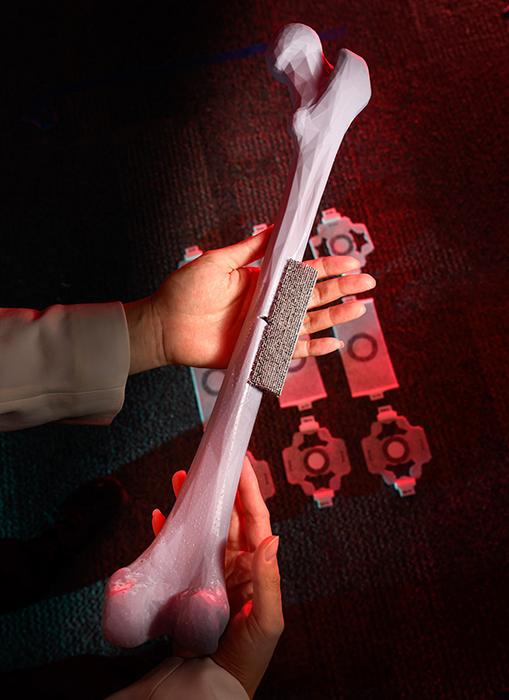CHAMPAIGN, Ill. — Natural materials like bone, bird feathers and wood have an intelligent approach to physical stress distribution, despite their irregular architectures. However, the relationship between stress modulation and their structures has remained elusive. A new study that integrates machine learning, optimization, 3D printing and stress experiments allowed engineers to gain insight into these natural wonders by developing a material that replicates the functionalities of human bone for orthopedic femur restoration.

Credit: Photo by Fred Zwicky
CHAMPAIGN, Ill. — Natural materials like bone, bird feathers and wood have an intelligent approach to physical stress distribution, despite their irregular architectures. However, the relationship between stress modulation and their structures has remained elusive. A new study that integrates machine learning, optimization, 3D printing and stress experiments allowed engineers to gain insight into these natural wonders by developing a material that replicates the functionalities of human bone for orthopedic femur restoration.
Fractures of the femur, the long bone in the upper leg, are a widespread injury in humans and are prevalent among elderly individuals. The broken edges cause stress to concentrate at the crack tip, increasing the chances that the fracture will lengthen. Conventional methods of repairing a fractured femur typically involve surgical procedures to attach a metal plate around the fracture with screws, which may cause loosening, chronic pain and further injury.
The study, led by University of Illinois Urbana-Champaign civil and environmental engineering professor Shelly Zhang and graduate student Yingqi Jia in collaboration with professor Ke Liu from Peking University, introduces a new approach to orthopedic repair that uses a fully controllable computational framework to produce a material that mimics bone.
The study findings are published in the journal Nature Communications.
“We started with materials database and used a virtual growth stimulator and machine learning algorithms to generate a virtual material, then learn the relationship between its structure and physical properties,” Zhang said. “What separates this work from past studies is that we took things a step further by developing a computational optimization algorithm to maximize both the architecture and stress distribution we can control.”
In the lab, Zhang’s team used 3D printing to fabricate a full-scale resin prototype of the new bio-inspired material and attached it to a synthetic model of a fractured human femur.
Click here to see a video describing this research.
“Having a tangible model allowed us to run real-world measurements, test its efficacy and confirm that it is possible to grow a synthetic material in a way analogous to how biological systems are built,” Zhang said. “We envision this work helping to build materials that will stimulate bone repair by providing optimized support and protection from external forces.”
Zhang said this technique can be applied to various biological implants wherever stress manipulation is needed. “The method itself is quite general and can be applied to different types of materials such like metals, polymers — virtually any type of material,” she said. “The key is the geometry, local architecture and the corresponding mechanical properties, making applications almost endless.”
The David C. Crawford Faculty Scholar Award from the U. of I. supported this research.
Zhang also is affiliated with mechanical science and engineering and the National Center for Supercomputing Applications at Illinois.
Editor’s note:
To reach Shelly Zhang, call 217-300-1815; email zhangxs@illinois.edu. For more information, visit https://zhang.cee.illinois.edu/. The paper “Modulate stress distribution with bio-inspired irregular architected materials towards optimal tissue support” is available online. DOI: 10.1038/s41467-024-47831-2
Journal
Nature Communications
Method of Research
Computational simulation/modeling
Subject of Research
Not applicable
Article Title
Modulate stress distribution with bio-inspired irregular architected materials towards optimal tissue support
Article Publication Date
21-May-2024
COI Statement
The authors declare no competing interests.



